5 Best Men’s NCAA Swims of the 2010s (So Far)
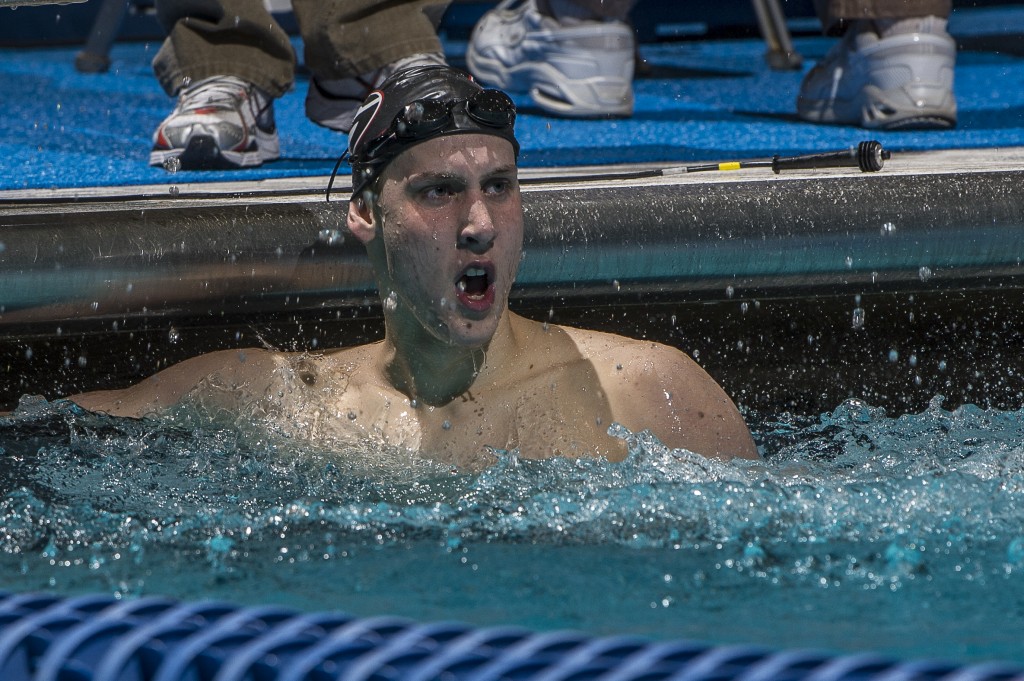
By Andy Ross, Swimming World College Intern
The decade is about half-over and it is time to do some reflecting. We are about five and a half years from the start of the ‘jammer era’ and swimming has progressed so much since then. We did not expect a lot of the fast swimming that has happened in the last half decade. Seemingly untouchable records from the rubber suit days have have fallen.
The NCAA Championships are an incredible swim meet. It is the meet that made me fall in love with swimming when I was nine years old. I’ve been analyzing the meet for eleven years now and I have always wanted to compile a list like this.
So here it is…the top 5 men’s NCAA swims from the first half of this decade.
5. David Nolan’s Breakthrough in the 200 IM
When Ryan Lochte went 1:40.55 in the 200 IM in the ’06 NCAAs, many wondered when someone would go under 1:40 in the event; a barrier that seemed unfathomable at the time. Lochte got as close as 1:40.08 in the 2007 USA Winter Nationals, but he would not be the first one to break the barrier. Bradley Ally of Florida eventually broke Lochte’s NCAA record of 1:40.49 at the 2009 NCAAs, but still nobody had broken the barrier.
When David Nolan of Stanford went 1:40.07 un-tapered at the Pac-12s in 2015, many thought this would be the year someone could finally go under 1:40, no matter how scary it sounded. It would not be an easy task for Nolan to do come NCAAs.
Sophomore Will Licon from Texas was on fire and went 1:40.68 in prelims. Nolan had qualified second at 1:41.37 and Ryan Murphy of California was third. In the final, Nolan jumped on his strengths right away. He led at the halfway point at 45.99 with Murphy in second (46.73) and Licon in third (47.07). Licon used his strong breaststroke to pull close to Nolan at the 150, but could not catch him on the freestyle leg. Nolan pulled away and touched the wall first at a 1:39.38.
It almost seemed surreal to see someone break 1:40 in the 200 IM for the first time. But Nolan did it while Licon was second at 1:40.09. This was almost expected for Nolan as he came out of high school with a 1:41, but he finally broke through his senior year, breaking the stubborn barrier.
Watch the race here (courtesy of James Bowen)
4. Chase Kalisz’s Unbelievable 400 IM
At the 2009 NCAAs, Tyler Clary did the unthinkable when he beat Michael Phelps’ American record going 3:35.98. Over the years, it was unclear if that record would get touched again. Connor Dwyer from Florida was the closest person to the record at the 2011 SECs when he went 3:37. He fell ill with a stomach virus at the NCAAs that year so he would not get a crack at Clary’s record there.
The landscape changed when a young man from Baltimore won the 2013 NCAAs as a freshman. Chase Kalisz, representing the University of Georgia, won the NCAA title as a freshman going 3:38.05. He won silver at the World Championships that summer and he had the momentum going into the college season in the fall. Swimming in his home pool at the 2014 SECs, Kalisz went 3:36.89, the fastest time anyone had gone since Clary’s 3:35. Kalisz was unrested at SECs and ready to drop a huge swim at NCAAs that year.
As the race unfolded, Dan Wallace, Dylan Bosch, and Kalisz were ahead after the fly leg. Kalisz started to extend the lead in the backstroke leg, which was a death sentence for the rest of the field. Kalisz had won the race a year prior based on his incredible breaststroke leg.
In 2013, he turned in seventh at the 200. In 2014, he turned first. Game over. Kalisz uncorked a 59.41 breaststroke split to propel himself into the lead. His freestyle leg was the fastest in the field and when he touched the time was 3:34.50. Not only was it the fastest time in history, but also was the fastest time by 1.5 seconds. The crowd could not believe it as Kalisz had vaulted himself to number 1 all time.
Watch the race here (courtesy of Justin Wu)
3. Martin Grodzki and Chad La Tourette’s epic 1650 duel
Chris Thompson set the NCAA and American record in the 1650 at the 2001 NCAAs with a 14:26.62. Little did anyone know that that would be one of the long-standing records in short course yards.
There were many challengers over the years who tried, but failed in surpassing Thompson atop the all-time standings. One of the first to come close to the record was Larsen Jensen of USC who missed the record by .08 seconds at the 2007 NCAAs. The next year, Sebastien Rouault of Georgia was only .24 back at the 2008 NCAAs.
Ous Mellouli went 14:27.33 at the 2010 Minnesota Grand Prix. In an interview on the Morning Swim Show, Mellouli dubbed the record “cursed” in reference to all the swimmers that got close to the record, but could not surpass it. That all changed at the 2012 NCAAs.
Going into the race, the favorite was Stanford senior Chad La Tourette who won the event in 2010. The field also included a rapidly improving sophomore from Michigan in Connor Jaeger, the defending champion in Texas Junior Michael McBroom, and Georgia junior Martin Grodzki. Grodzki had tied for second with La Tourette at the 2011 NCAAs and Grodzki had already won the 500 at the meet.
Early on, Grodzki and La Tourette took the race out, distancing themselves from the field and putting them on track to break Thompson’s record. La Tourette started to take the lead around the 1000 mark and it looked like he would start to run away with it as Grodzki started to fall off. Grodzki put the pedal down and took the lead at the 1300 (It was around that time that announcer Sam Kendrick called it a ‘classic in the making.’).
Grodzki took a big lead towards the end of the race but La Tourette was still right there. As the two swimmers raced down the last 25, Grodzki touched in a new NCAA record of 14:24.08. Chad La Tourette was second in a new American record (Grodzki is German) at 14:24.35. The curse was broken.
Watch the race here (courtesy of Rhys Brennan)
2. Kevin Cordes’ mind-boggling 200 breaststroke
At the 2012 USA Winter Nationals, Kevin Cordes recorded the fastest time in history in the 200 breaststroke at 1:50.73. Before that, the record was 1:51.40. A sub-1:50 200 breast was in the making that season, but nobody could have expected what Cordes was going to do at the 2013 NCAAs.
On the first night of competition, Cordes unleashed a 49.56 100 breast split on the 400 medley relay en route to Arizona winning that relay. It was the fastest split in history and it was scary to think what Cordes could do from a flat start in the individual events.
During the prelims of the 200, Cordes had extremely easy speed and broke the American record with a 1:49.79 (I believe this was the spawning of the ‘Boom Shockalocka!’ from Sam Kendrick). Everyone in the venue was expecting him to be faster in finals.
In the final, Cordes still looked like he was cruising. His first 100 split of 52.19 would have put him sixth in the individual 100 and he wasn’t done. Did I mention he only took 16 strokes the first 100? He built on his lead and the entire venue was in shock. Cordes cruised down the last 25 and finished at 1:48.68.
He was the first swimmer to ever break 1:50 (and 1:51 for that matter) and he did it by almost two full seconds. I remember making eye contact with Kendrick after the race was over and we both just shook our heads, in shock of what just happened. He took the race to a whole new level, including going .02 faster in 2014.
But this swim ranks in our top 5 because of the revolution that Cordes had started to this event. Nobody thought it was conceivable at the time to swim under 1:50 and he made it look easy. Lost in the race was Carl Mickelson, Cordes’ teammate, getting second at 1:51.90 out-touching Trevor Hoyt of California at 1:52.19.
Watch the race here (courtesy of John Charles)
1. Vlad Morozov’s 17
In 2005, Fred Bousquet of Auburn became the first man to ever go under 19 seconds in a 50 free in short course yards. After that swim, many swim fans were left wondering, “Will anyone every break 18 seconds?” Well, the question was answered in 2013.
Throughout the 2012-2013 season, Vlad Morozov had a slew of swift 50 free splits. He had gone sub-19 on a relay in-season. That is a feat in itself and there was talk all season whether or not he could do the unthinkable and go sub-18.
In the prelims of the 200 free relay at the 2013 NCAAs, I remember watching the swimmers and soon as Kendrick had announced that Vlad Morozov was in the water, almost everyone stopped to watch if he could do it. He managed an 18.22 in the prelims going third for USC. The final would be a different story.
Auburn had managed to take the lead at the halfway point when Morozov dove in for the third leg. He was swimming faster than anyone had ever gone and touched the wall, and there was a little bit of a delay before the digits ’17.86’ flashed on the board. The fastest split in history had been swum before my very eyes. I remember screaming and the entire anchor leg felt like it didn’t even matter anymore because of what had just happened.
The crowd erupted after Morozov touched the wall and Twitter blew up. The swimming community was in disbelief, and that is why this is the #1 swim from the last 5 years, and it would certainly make a case for the #1 swim all-time, but that is a story for another day.
Oh and by the way, Auburn won the relay at 1:15.48. USC was second at 1:16.22 and Michigan was third at 1:16.49.
Watch the race here
Honorable mention goes to:
Ryan Murphy’s 1:36– How many people can go that freestyle?
The Ohio State sickness– An illness picked up from an airplane causes the meet to be delayed 24 hours.
Mark Dylla’s redemption– A year after touching first but getting disqualified, Dylla finally wins the 200 fly title he had taken away a year prior.
Brett Fraser and Dax Hill’s color-barrier breaking swim– The first time two black men clench first and second in an American-based event.





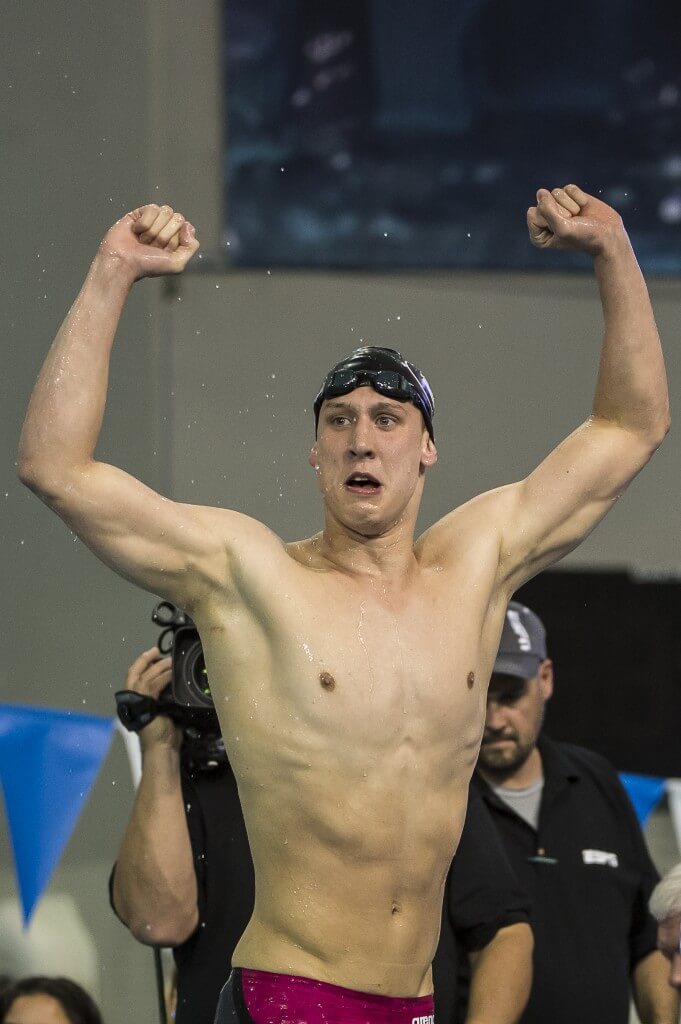
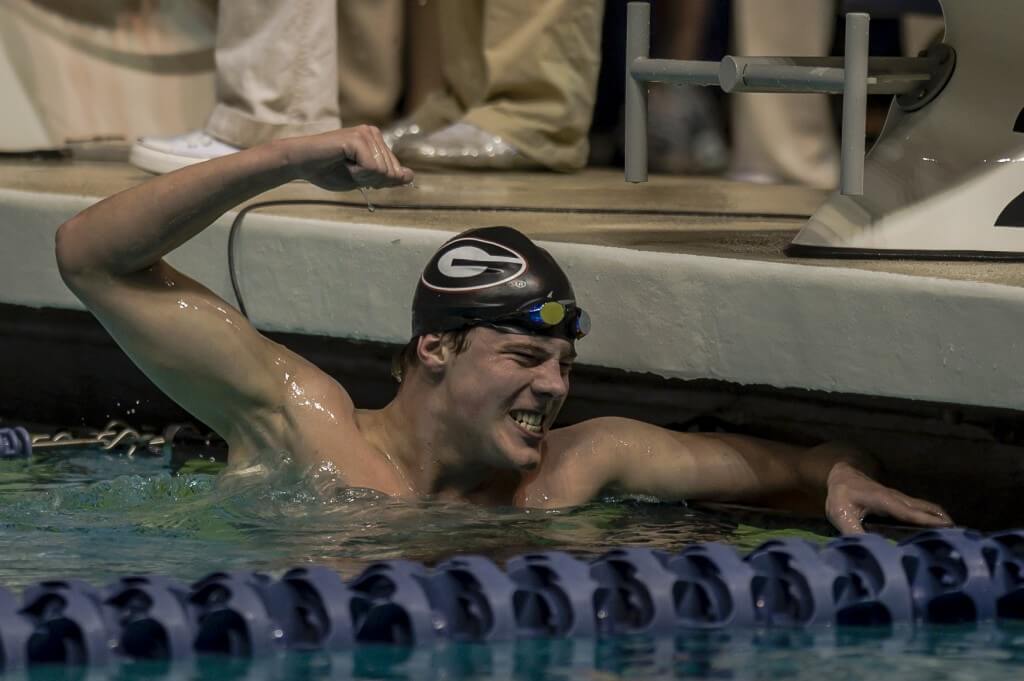
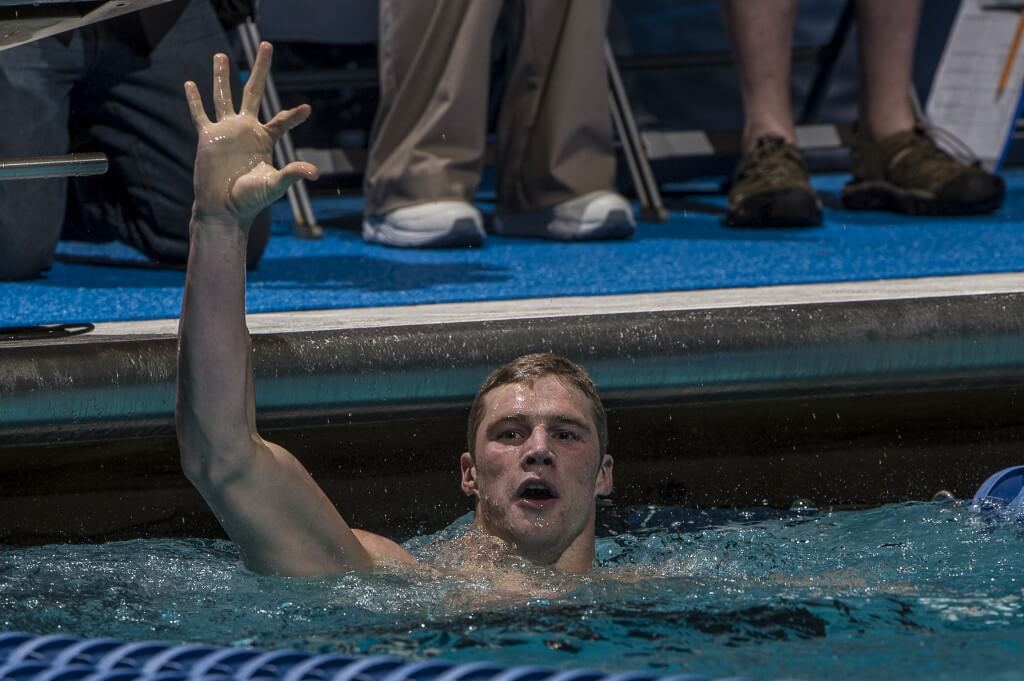
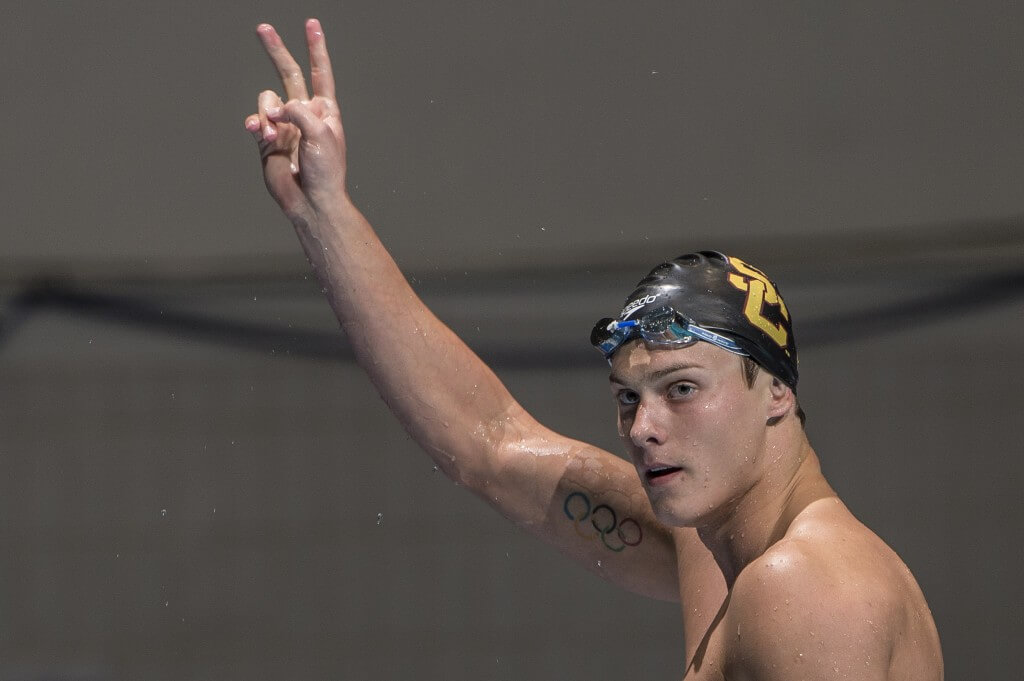
Those swims were electrifying! Fantastic article, and I loved the historical anecdotes.
Great article Andy! I never would have thought of that mile had I written this myself! One race I think could be mentioned in the honorable mention may have been the 400 medley relay at this year’s NCAAs. Not only did Texas break the NCAA and US Open record, but Cal also broke the American record. I believe Cal had the fastest front half in history and Texas had the fastest back half in history. Very exciting race.